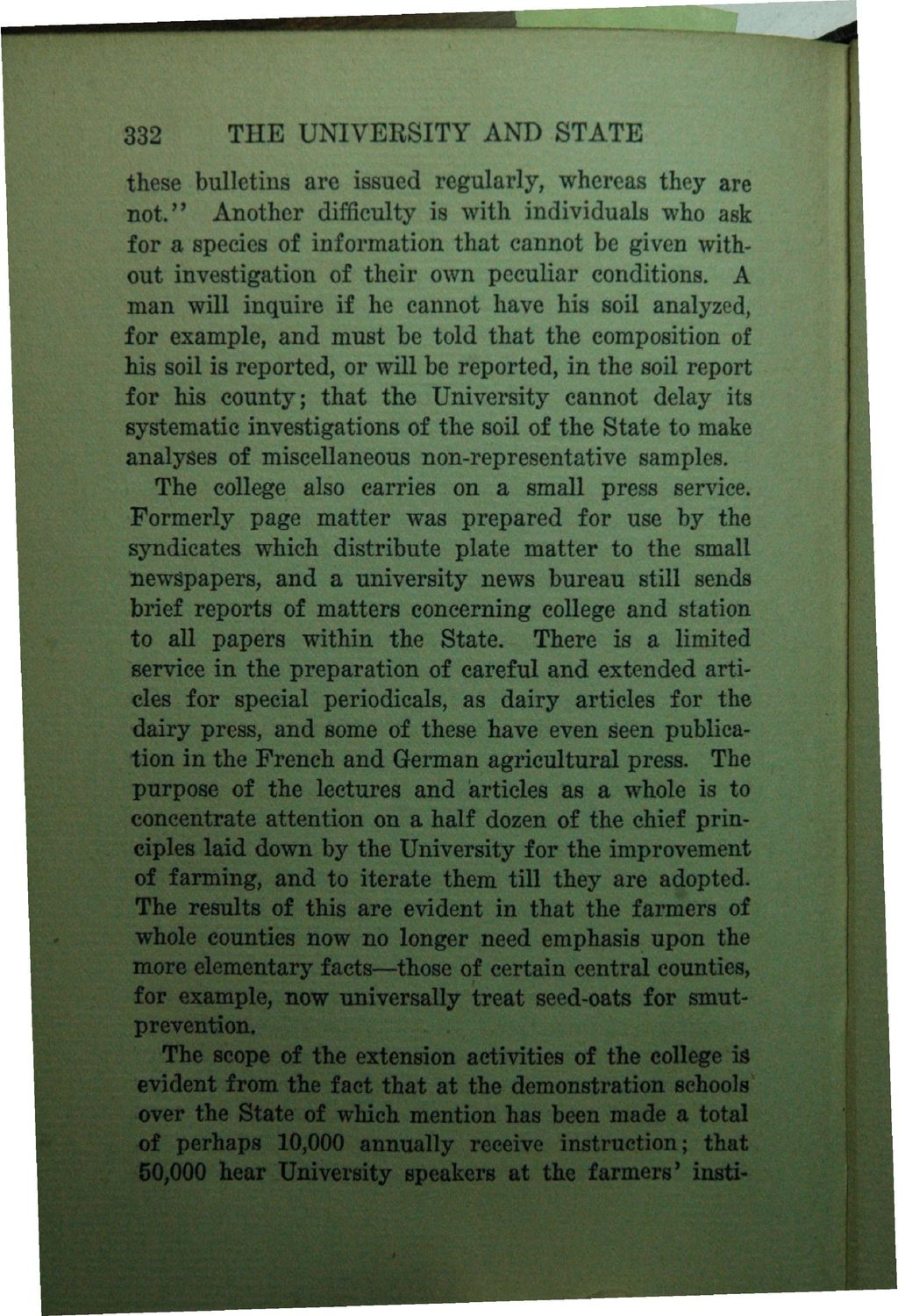| |
| |
Caption: Book - History of the University (Nevins)
This is a reduced-resolution page image for fast online browsing.

EXTRACTED TEXT FROM PAGE:
332 THE UNIVERSITY AND STATE these bulletins are issued regularly, whereas they are not." Another difficulty is with individuals who ask for a species of information that cannot be given without investigation of their own peculiar conditions. A man will inquire if he cannot have his soil analyzed, for example, and must be told that the composition of his soil is reported, or will be reported, in the soil report for his county; that the University cannot delay its systematic investigations of the soil of the State to make analyses of miscellaneous non-representative samples. The college also carries on a small press service. Formerly page matter was prepared for use by the syndicates which distribute plate matter to the small newspapers, and a university news bureau still sends brief reports of matters concerning college and station to all papers within the State. There is a limited service in the preparation of careful and extended articles for special periodicals, as dairy articles for the dairy press, and some of these have even seen publication in the French and German agricultural press. The purpose of the lectures and articles as a whole is to concentrate attention on a half dozen of the chief principles laid down by the University for the improvement of farming, and to iterate them till they are adopted. The results of this are evident in that the farmers of whole counties now no longer need emphasis upon the more elementary facts—those of certain central counties, for example, now universally treat seed-oats for smutprevention. The scope of the extension activities of the college is evident from the fact that at the demonstration schools over the State of which mention has been made a total of perhaps 10,000 annually receive instruction; that 50,000 hear University speakers at the farmers' insti-
| |